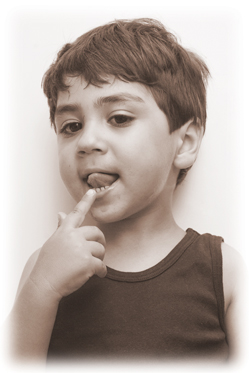You finally get a chance to relax at a nice restaurant and you can’t get past the screaming child at the next table. You hear the mother tell the server, “It’s his thing. He always gets upset when his food touches.” But he’s shrieking like he has been stuck with a fork.
We all have our preferences in life. Many of us have a few personality quirks that make us extra unique. But when these personality traits interfere with daily functioning or when they are severe in frequency, duration, and intensity, it becomes a dysfunction.
Sensory processing disorder (SPD) is a neurological disorder that results from the brain’s inability to integrate certain information received from the body’s sensory systems. These sensory systems are responsible for interpreting sights, sounds, smell, tastes, and body position. In individuals with SPD, the brain receives the information coming from the body. The information, however, is interpreted and processed incorrectly.
Let’s examine the senses, look at how some of these symptoms manifest, and review some coping strategies for managing SPD.
If hearing and language are part of the issue, a child with SPD might cover her ears and be startled by loud sounds. Earplugs or sound-blocking headphones might be a good option. Additionally, this child may only be able to understand or follow two directions at a time or have difficulty filtering out other sounds while trying to pay attention to one person talking. You might ask her to repeat directions before a task is started. It’s
also important to establish eye contact with this child before speaking.
If taste is the sense that is affected, the child might be an extremely picky eater. She might suck on her hair or shirt, or incessantly bite her fingernails. You might have this child try sugar-free gum or sugar-free candy. For this child, literally playing with her food at the table is a good thing.
If the sense of smell is involved, a child with SPD might refuse to eat certain foods or fail to notice unpleasant smells. As a parent or caregiver, you should make a point to notice, describe, and discuss various smells. Try making your own scratch-and-sniff stickers, and encourage time in the kitchen to familiarize the child with food odors.
A child who has SPD related to the visual sense might get headaches after reading or watching TV, is likely to avoid eye contact, and might have difficulty telling the difference between similar printed letters. You might use graph paper to help align numbers during math work, post a daily schedule with pictures, utilize colorful post-it-notes, and encourage students to cover areas of the page they’re not currently working on.
If the sense of touch is affected, the child with SPD might appear clumsy and bump into things, move slowly and cautiously, and have extreme difficulty waking up. Sometimes this child will shake his leg when sitting, crack knuckles, chew on pens, or grind his teeth. You might consider using weighted blankets and heavy pillows. It’s also important to teach about personal space and enforce staying within those boundaries. Also, these kids might benefit from having a quiet fidget toy or a stress ball to squeeze.
When diagnosed correctly, SPD is most commonly recognized in children, but untreated adults also experience and continue to be affected by its symptoms. Because adults with SPD have struggled for most of their lives, they may also experience depression, underachievement, anxiety, or aggression. It can also affect an individual’s ability to succeed socially, in marriage, and in work environments.
It might be difficult to find practitioners familiar with this diagnosis. This is because in 2012, a policy statement from the American Academy
of Pediatrics (AAP) concluded that there was insufficient evidence to support an independent diagnosis of SPD. The AAP also advised against the diagnosis of SPD, unless it was a symptom due to another condition such as: autism spectrum disorder, attention-deficit/hyperactivity disorder, developmental coordination disorder, or anxiety disorder. This action from the AAP was followed in 2013 by a decision not to include SPD as a diagnosis in the fifth edition of the Diagnostic and Statistical Manual of Mental Disorders (DSM-5) published by the American Psychiatric Association.
Treatment for SPD is called sensory integration. Treatment depends on the individual’s needs. But in general, it involves coaching individuals in situations in which they feel uncomfortable and helping them get used to things they may have difficulty tolerating. Many individuals with SPD develop coping strategies independently and feel that they don’t require treatment. It is important to know that the coping helps to control SPD, but does not eliminate the condition.






